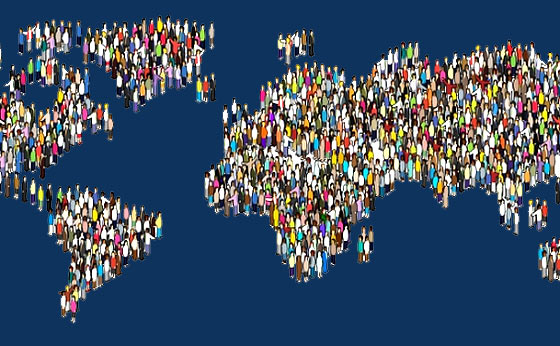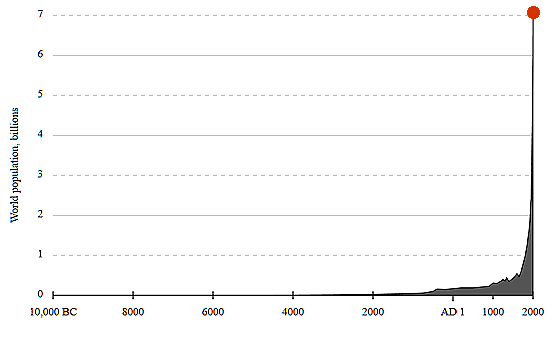Population Explosion And Peak Renewable Food Resources

If you’ve ever wondered or suspected that there is a limit or balance to the expansion of human population versus the food required to feed us all, your instinct may be correct…
A recent study at the Helmholtz Centre (Germany), Yale University and Michigan State University demonstrate that several key (food) resources have recently passed their “peak-rate year” — the maximum increase year, and will most certainly affect how we proceed into the future while sustaining 7 billion-plus humans.
Do you think the powers-that-be know this?
(In fact some of them believe there should only be about 500 million of us.)
Take a look at this human population graph:

Obviously, the graph cannot continue to go up forever – and probably not much longer without any significant or immense breakthrough in food production and other resources which we consume – not to mention the other effects of high population density including disease transmission, social tensions and even wars over things like religion, empire conquest, resources, etc..
The study mentioned above was a result of landscape ecologists and plant ecologists who analyzed the production and extraction rates of 20 renewable renewable resources such as maize, rice, wheat or soya, which represent around 45% of the global calorie intake, as well as animal products, such as fish, meat, milk and egg.
For 16 of the 20 resources with a peak-year, the peak-year lay between 1988 and 2008 — a very narrow range in the history of humanity.
For example, the maximum global growth rate in crop yields for soya beans was in 2009, for milk it was 2004, for eggs it was 1993 and for the fish caught it was 1988.
The crop yield per area with maize, wheat, soya and rice on more than a quarter of the farming area around the world is stagnating or decreasing according to the report.
The apparent reason that the peak-year for so many of the renewable resources studied have occurred at about the same time is the major driver of global population growth. The rising population and change in diet in some regions of the world over the past few decades, such as India and China, have also increased the demand for renewable resources and thus the pressure to produce as much food as possible.
The study team found the highest rate of increase in the cultivation of arable land to be in the 1950s. The peak for human-made irrigation areas then followed in the 1970s, and the peak for nitrogen fertilizers was subsequently in the 1980s.
As we head into the future, more and more humans depend upon the efficiencies and successes of renewable resource systems which supply their food. When I observe the human population timeline coupled with the common-sense intuition that sustainability (of such numbers) require an enormous web of systems (out of our control) to keep us all alive – it makes me somewhat nervous – and therefore one reason why I prep, and why I attempt to live a more self-sustaining lifestyle which depends less upon external systems beyond my control.
Every little bit helps (your self reliance). Grow a garden this year. Plant a food-bearing tree or food-bearing bushes. Take some control.
While the apparent issues presented in this study may take years to cause notice, and while the ‘systems’ may be able to yet eek out another percent or two of efficiencies, don’t count on it lasting forever…
Source: Helmholtz Centre
